When we picture bison, those massive, shaggy giants of the North American plains, speed isn’t usually the first characteristic that comes to mind. Their imposing bulk—weighing up to 2,000 pounds with shoulders standing six feet tall—suggests power and endurance rather than swiftness. Yet these prehistoric-looking behemoths harbor a surprising secret: they can outrun nearly any human on Earth. Bison possess remarkable speed capabilities that have evolved over millennia as essential survival mechanisms. This combination of immense size and unexpected agility makes them one of the most fascinating and potentially dangerous large mammals in North America. Let’s explore just how fast these magnificent creatures can move and why their speed is yet another reason to respect their wild nature.
The Surprising Speed of Bison
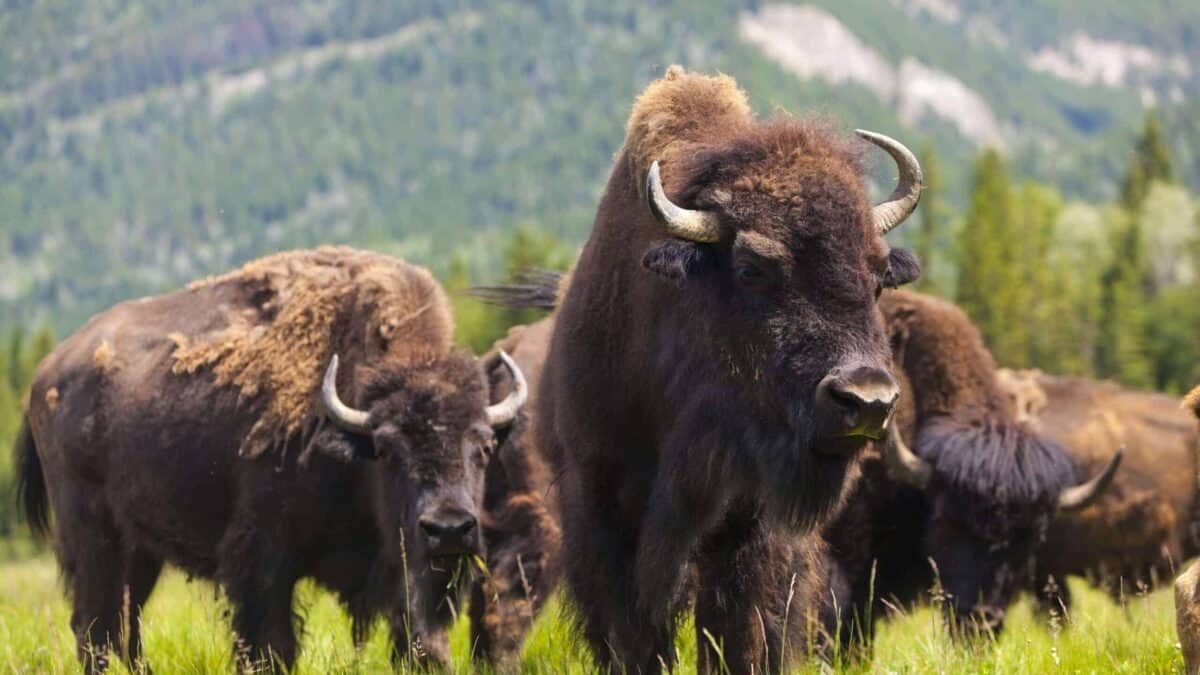
Despite their massive size and weight, American bison can reach speeds of 35-40 miles per hour (56-64 kilometers per hour). This remarkable velocity puts them among the fastest land mammals in North America, capable of outrunning horses over short distances. For context, the fastest human ever recorded, Usain Bolt, reached a top speed of just under 28 mph (45 km/h) during his world record 100-meter sprint—and that’s an exceptional outlier among humans. The average person can run approximately 8 mph (13 km/h).
This disparity means a bison can outrun even the fastest human athletes with ease, and they can maintain these high speeds for much longer than humans can sustain their sprints. Even more impressively, bison can reach these top speeds within just a few strides, accelerating from a standstill to full gallop with surprising quickness. This combination of raw speed and rapid acceleration makes them particularly dangerous when agitated or threatened.
Evolutionary Advantages of Speed

The bison’s impressive speed developed as an evolutionary adaptation to survive in their natural habitat. Before European settlement dramatically reduced their numbers, bison roamed North America’s vast plains in enormous herds. These open grasslands offered little cover from predators like wolves and grizzly bears. While adult bison had few natural predators due to their size, calves were vulnerable, and the herds needed speed to protect their young.
Speed also allowed bison to undertake the long-distance seasonal migrations that were essential to their survival. These nomadic journeys took them across vast territories in search of fresh grazing lands and water sources. Their ability to move quickly across large distances enabled them to adapt to changing environmental conditions and seasonal variations in food availability. This mobility proved crucial for species survival during harsh winters and periods of drought.
Anatomical Features That Enable Speed
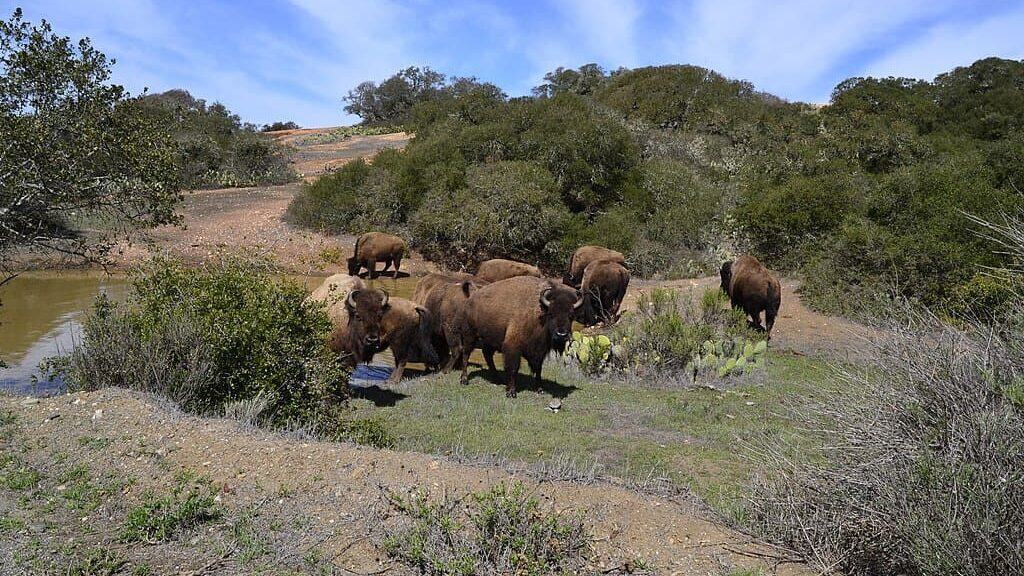
Bison possess several anatomical adaptations that contribute to their surprising speed. Their bodies are front-heavy, with massive shoulders and heads supported by powerful forelegs. This weight distribution might seem counterintuitive for speed, but it’s balanced by relatively slim hindquarters and powerful hind legs that provide tremendous propulsion. Their unique body structure allows them to pivot quickly despite their size—a capability that makes them especially dangerous when charging.
The bison’s hooves are another important adaptation for speed. Each foot has two large, pointed hooves that provide excellent traction on various terrains, from muddy riverbanks to snow-covered plains. These specialized feet allow bison to maintain stability at high speeds across diverse landscapes. Additionally, their respiratory and cardiovascular systems have evolved to support sustained physical exertion, enabling them to maintain high speeds over considerable distances when necessary.
Comparing Bison Speed to Other Animals
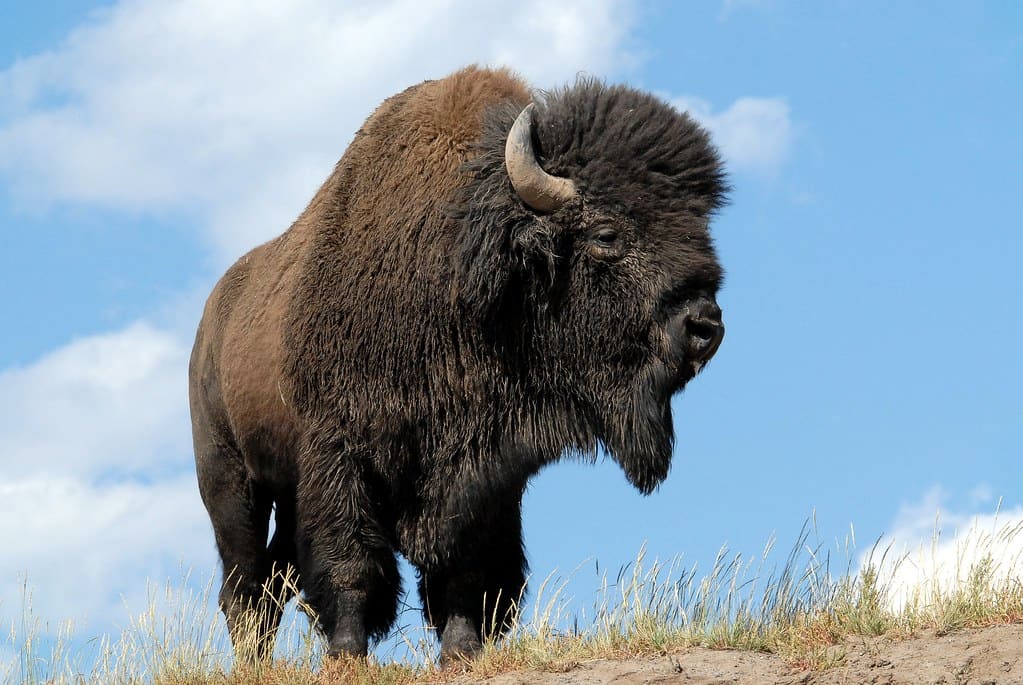
When comparing bison speed to other large mammals, their performance is particularly impressive. Moose, which can weigh up to 1,500 pounds, typically run at speeds of 20-30 mph. Elk can reach speeds of up to 45 mph, making them slightly faster than bison, but they weigh significantly less. Black bears top out around 30 mph, while grizzly bears can briefly sprint at speeds up to 35 mph—comparable to bison but generally not sustainable for as long.
Outside North America, African buffalo—a distant relative of the American bison—can reach speeds of about 35 mph, similar to their American cousins. The cape buffalo, despite its fearsome reputation, is actually slightly slower at 30-35 mph. Domesticated cattle, which have been bred for meat and milk production rather than survival, are significantly slower than their wild bison relatives, typically reaching maximum speeds of only 15-20 mph. This comparison highlights how remarkable bison speed truly is, especially considering their massive size.
Bison Speed in Different Terrains
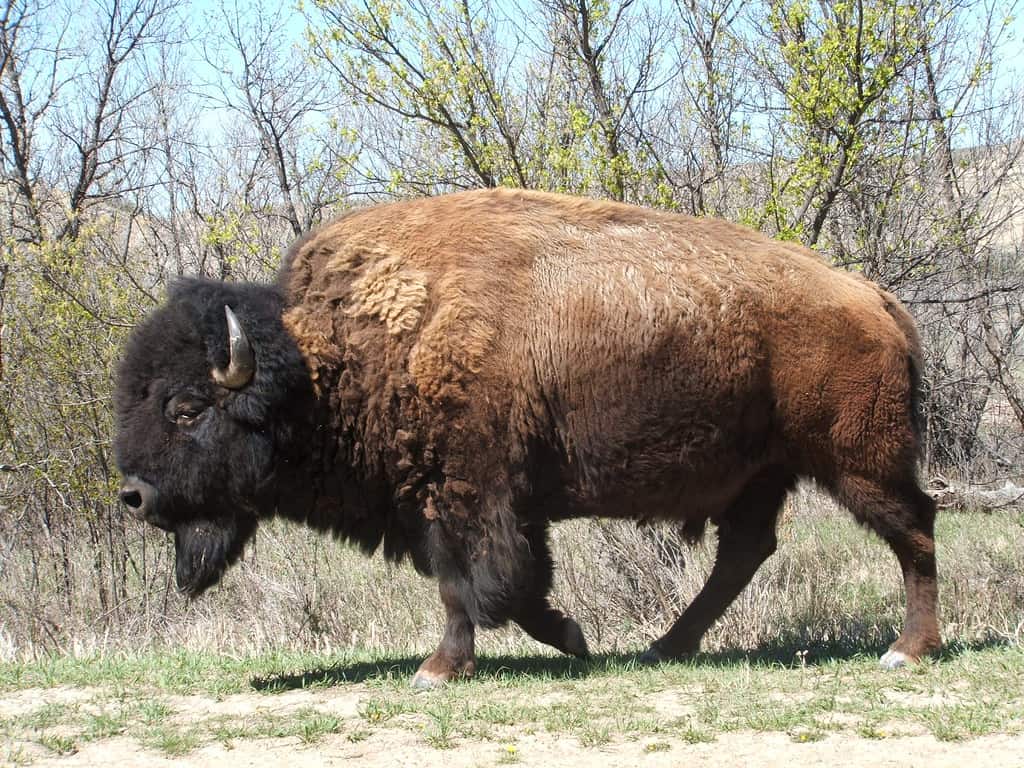
Bison demonstrate remarkable adaptability when it comes to traversing different landscapes. On open grasslands—their preferred habitat—they can reach and maintain their top speeds with relative ease. The flat, unobstructed terrain allows them to hit 35-40 mph when necessary. However, what’s perhaps more impressive is their ability to navigate difficult terrain without significantly sacrificing speed. In forested areas, bison can still move quickly, maneuvering through trees and undergrowth with surprising agility for animals of their size.
Even more remarkable is their capability to handle steep inclines. Bison can ascend hillsides at impressive speeds, using their powerful legs to propel their massive bodies upward. They’re also adept at crossing rivers and streams, swimming when necessary with their heads and humps above water. During winter months, bison use their broad heads and strong necks as natural snowplows, sweeping aside snow to reach the vegetation beneath—and they can still run through snow depths that would stop many other animals, maintaining speeds that make them dangerous year-round.
Speed as a Defensive Mechanism
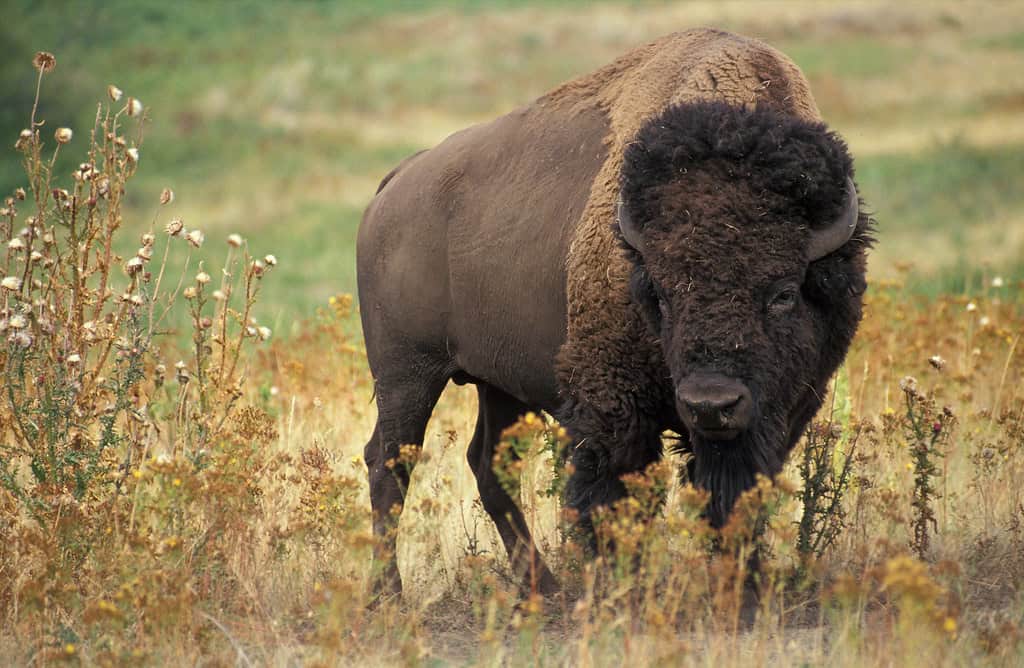
Speed serves as one of the bison’s primary defensive mechanisms. When threatened, adult bison typically have two responses: stand their ground (particularly females protecting calves) or flee. Their impressive speed allows the entire herd to quickly distance themselves from potential threats. This flight response is often triggered by predators or perceived dangers, with the herd moving as a coordinated unit. The strongest and fastest adults typically position themselves at the perimeter of the group, providing protection for calves and weaker individuals in the center.
However, when cornered or when calves are threatened, bison will not hesitate to use their speed offensively. A charging bison can accelerate to dangerous speeds within seconds, using their massive heads and sharp horns as battering rams. This combination of speed, weight, and natural weaponry makes them formidable opponents even to large predators like wolves and bears. Their ability to pivot quickly and change direction during a charge adds an unpredictable element that makes them particularly dangerous to humans who misjudge their speed and agility.
The Danger of Underestimating Bison Speed

Every year, national parks and wildlife refuges report incidents where visitors are injured after underestimating bison speed and agility. In Yellowstone National Park alone, bison injure more visitors than any other animal. The misconception that these large, seemingly docile animals are slow or lumbering leads people to approach too closely or to believe they can quickly retreat to safety if the animal becomes agitated. This dangerous miscalculation accounts for numerous injuries each year.
Park rangers and wildlife officials consistently warn that safe viewing distances from bison should be at least 25 yards (23 meters). However, even this distance can be covered by a charging bison in less than two seconds. Wildlife experts emphasize that bison give warning signs before charging—including raised tails, pawing the ground, and snorting—but once they decide to charge, their acceleration is explosive. The National Park Service regularly reminds visitors that bison can run three times faster than humans, and no visitor should ever assume they can outrun these powerful animals.
Speed Variations Among Bison

Not all bison demonstrate the same speed capabilities. Various factors influence how fast an individual bison can run, including age, sex, health condition, and the subspecies. Young adult males typically exhibit the highest top speeds, with their peak physical condition allowing them to reach the upper range of 40 mph. Female bison (cows) are generally slightly slower but still capable of impressive speeds, especially when protecting their calves. Older bison naturally slow down as they age, though even elderly bison can outrun humans.
The two subspecies of American bison also show slight variations in speed capabilities. Plains bison (Bison bison bison), which evolved in open grasslands, tend to be faster runners over flat terrain. Wood bison (Bison bison athabascae), which are slightly larger and adapted to more forested environments, may be marginally slower on open ground but demonstrate better agility in wooded areas. These differences reflect their evolutionary adaptations to different habitats, though both subspecies are remarkably fast for their size.
Bison Running Behavior and Patterns

Bison exhibit fascinating running behaviors that reflect their social nature and evolutionary history. When moving at high speeds, they typically adopt a galloping gait with all four feet leaving the ground simultaneously at points during their stride—similar to horses. They often run in loose formation rather than in single file, with dominant animals leading the movement. During migratory periods or when relocating to new grazing areas, they may maintain a steady trot for hours, covering 10-15 miles in a day without showing significant fatigue.
Particularly interesting is their stampeding behavior. When startled or threatened, entire herds can break into coordinated runs that create thunderous displays of power. Historical accounts from the 19th century describe bison stampedes that lasted for hours and covered many miles, with the ground literally trembling under the impact of thousands of hooves. While today’s smaller herds don’t create quite the same effect, witnessing even a small group of bison running at full speed remains one of North America’s most impressive wildlife spectacles—showcasing both their remarkable speed and their almost hypnotic coordination as a herd.
Tracking and Measuring Bison Speed

Modern wildlife biologists employ various technologies to accurately measure and study bison speed. GPS tracking collars provide detailed data about movement patterns, allowing researchers to calculate both average traveling speeds and maximum sprint velocities. These tracking systems reveal that while bison can reach 35-40 mph in short bursts, their typical traveling pace when moving between grazing areas is a more moderate 15-20 mph. High-speed cameras stationed in national parks and preserves have captured footage that allows for frame-by-frame analysis of bison running mechanics.
Historical accounts offer interesting perspectives on bison speed as well. Early European explorers and Native American observations consistently noted the animals’ surprising quickness. In the 19th century, horseback hunters reported that their mounts could only overtake bison after extended chases that would eventually tire the larger animals. Traditional Native American hunting methods often relied on driving bison toward cliffs or corrals precisely because directly pursuing them on foot was futile, and even mounted hunters faced a significant challenge due to the bison’s speed and endurance.
Conservation Implications of Bison Mobility

The impressive mobility of bison has important implications for modern conservation efforts. Historically, bison required vast territories for sustainable migration patterns that followed seasonal changes in vegetation. Their speed enabled them to cover these large ranges efficiently, moving between summer and winter feeding grounds as needed. Today, with bison confined to relatively small protected areas, their natural movement patterns are restricted. Conservation biologists must consider this limitation when planning sustainable herd sizes and habitat management strategies.
Some innovative conservation approaches are now accounting for bison’s natural mobility needs. Projects like the American Prairie Reserve in Montana aim to create connected landscapes large enough to support the natural movement patterns of bison herds. These efforts recognize that the health of bison populations depends not just on having enough food resources, but also on having sufficient space to express natural behaviors—including running at full speed when necessary. Understanding bison speed and movement patterns thus becomes crucial for creating effective conservation strategies that preserve not just the species itself, but also its natural behaviors.
Respecting the Speed and Power of Bison

The remarkable speed of the American bison serves as a powerful reminder of why these animals demand our respect and caution. Despite their deceptively calm demeanor when grazing, bison remain wild animals with impressive physical capabilities that evolved over thousands of years. Their ability to accelerate from standstill to over 35 mph in just a few strides makes them unpredictable and potentially dangerous when disturbed. This combination of massive size and surprising speed has caught many visitors to national parks and wildlife areas off guard, often with serious consequences.
Wildlife management experts consistently emphasize that appreciating bison means observing them from a safe distance and never attempting to approach them for photographs or closer views. The safest way to experience these magnificent animals is through binoculars or telephoto camera lenses, allowing visitors to witness their natural behaviors—including their impressive running capabilities—without putting themselves at risk. By understanding and respecting both the power and speed of bison, we can better appreciate these iconic North American mammals while ensuring our own safety and their continued well-being in the wild.
Conclusion: Faster Than You Think

The American bison stands as a testament to nature’s fascinating contradictions—a massive, seemingly lumbering giant capable of explosive speed that would leave Olympic sprinters in the dust. Their ability to reach speeds of 35-40 mph despite weighing up to a ton demonstrates the remarkable adaptations that evolved during their millions of years roaming North America’s varied landscapes. This unexpected swiftness serves as both a survival mechanism and a warning to humans who might underestimate the true capabilities of these iconic animals. Understanding bison speed not only enhances our appreciation for these magnificent creatures but also promotes safer interactions with them in the wild.
As conservation efforts continue to restore bison to portions of their historic range, recognizing and respecting their physical abilities becomes increasingly important for both human safety and successful wildlife management. Their impressive speed reminds us that despite centuries of near-extinction and recovery, bison remain truly wild animals with intact natural behaviors and capabilities. The next time you observe these shaggy giants peacefully grazing in Yellowstone or another protected area, remember that beneath their calm exterior lies the ability to transform instantly into one of North America’s fastest large land mammals—a living link to the continent’s prehistoric past that continues to surprise and impress us today.
- This Fish Has the Most Teeth in the Ocean—And Uses Them Well - August 9, 2025
- How Wolves Use Group Howls to Reunite With Pups - August 9, 2025
- 12 Dog Breeds That Form the Deepest Emotional Bonds with Their Owners - August 9, 2025

